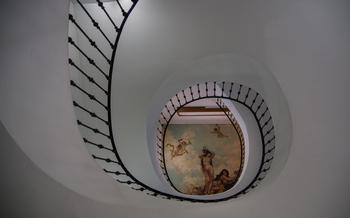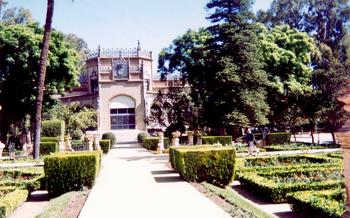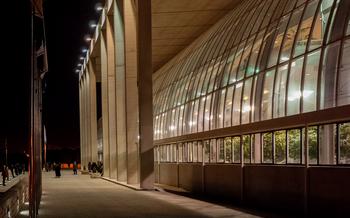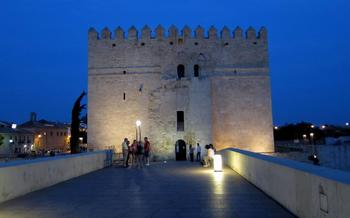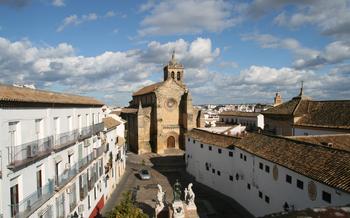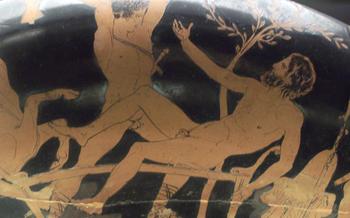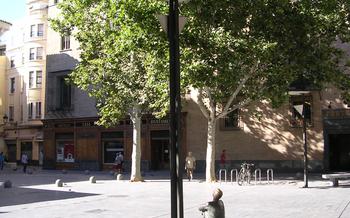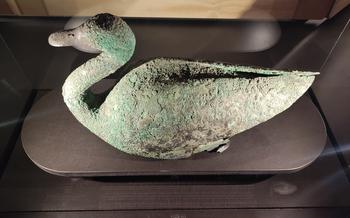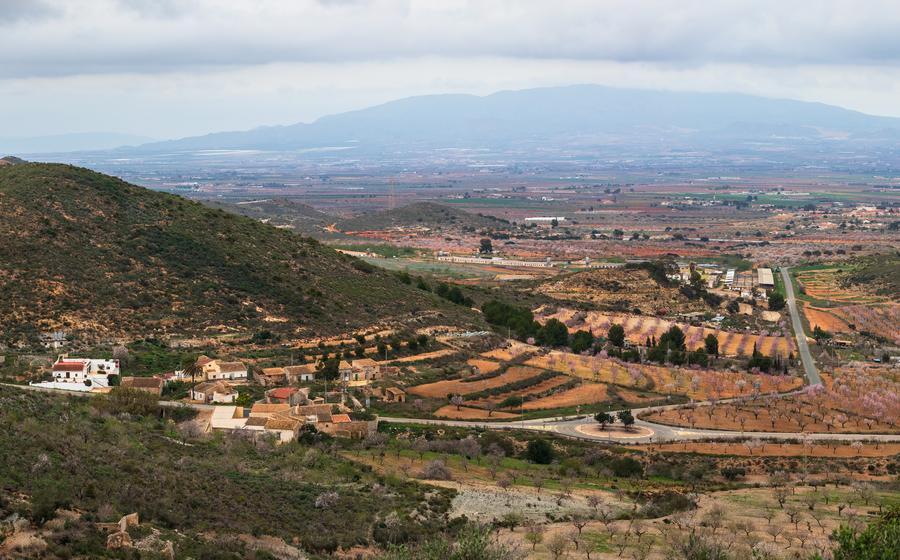
Archaelogical Museum in Ceutí
- The Archaeological Museum in Ceutí: A Journey Through History
- Discovering the Ancient Treasures of Ceutí
- Time Travel Through the Ceutí Museum's Exhibits
- Unveiling the Secrets of the Roman Villa
- Digging Deeper into the Iberian Culture
- Encountering the Bronze Age Treasures
- Exploring the Neolithic Period in Ceutí
- Guided Tours to Enhance the Museum Experience
- Special Exhibitions and Events at the Museum
- Souvenirs and Publications to Remember Your Visit
- Accessibility and Facilities for Visitors
- Opening Hours and Admission Information
- Getting to the Archaeological Museum in Ceutí
- Combining a Museum Visit with Other Attractions
- Insider Tip: Uncovering Hidden Gems in Ceutí
The Archaeological Museum in Ceutí: A Journey Through History
The Archaeological Museum in Ceutí is a treasure trove of ancient artifacts and historical wonders that offer a glimpse into the rich past of this captivating region. Founded in 1994, the museum is strategically located in the heart of Ceutí, a town steeped in cultural heritage and surrounded by breathtaking natural landscapes. This remarkable institution boasts an impressive collection that spans diverse eras, from the Neolithic period to the Roman Empire, providing visitors with a comprehensive journey through the annals of time.
Discovering the Ancient Treasures of Ceutí
Ceutí, nestled in the heart of the Segura River Valley, boasts a profound archaeological legacy that dates back to prehistoric times. The town's strategic location on the banks of this vital waterway made it a crossroads of cultures and civilizations, leaving behind a wealth of artifacts and ruins that tell the story of its past.
The Archaeological Museum of Ceutí stands as a guardian of this rich heritage, showcasing an array of intriguing artifacts that offer glimpses into the different eras that have shaped the region's identity. From the Neolithic period to the Bronze Age, from the Iberian era to the Roman period, the museum's collection transports visitors on a journey through time, revealing the diverse cultures that have flourished in this corner of southeastern Spain.
Among the highlights of the museum's collection are the impressive Iberian ceramics, the finely crafted bronze tools and weapons, and the intricate mosaics depicting scenes of Roman life. These artifacts, meticulously preserved and displayed, provide a tangible connection to the lives and customs of our ancestors, offering invaluable insights into the development of human society in this part of the world.
Time Travel Through the Ceutí Museum's Exhibits
The Archaeological Museum in Ceutí takes visitors on a journey through time, showcasing artifacts from different eras that have shaped the region's history.
Neolithic Period (5000-2000 BC): The museum's exhibits provide a glimpse into the earliest human presence in Ceutí during the Neolithic period. Stone tools, pottery, and other artifacts offer insights into the daily life and subsistence strategies of these early settlers.
Bronze Age (2000-1000 BC): The Bronze Age section showcases a collection of bronze tools and weapons, demonstrating the technological advancements of this period. These artifacts shed light on the transition from a Neolithic lifestyle to a more organized and complex society.
Iberian Era (6th-1st Century BC): Ceutí was once home to a significant Iberian settlement, and the museum's exhibits showcase a rich collection of Iberian ceramics, sculptures, and jewelry. These artifacts provide insights into the artistic expressions, religious beliefs, and social customs of the Iberian culture.
Roman Period (2nd Century BC-5th Century AD): The Roman era left a lasting impact on Ceutí, and the museum features a collection of Roman artifacts, including architectural elements, ceramics, and coins. These artifacts showcase the Roman influence on the region's urban development, trade, and cultural practices.
Through these exhibits, the Archaeological Museum in Ceutí invites visitors to explore the diverse cultural heritage of the region, spanning from the Neolithic period to the Roman era.
Unveiling the Secrets of the Roman Villa
In the heart of Ceutí, a remarkable discovery awaits visitors at the Villa del Pantano de la Peña. This Roman villa, unearthed during an archaeological excavation, offers a glimpse into the opulent lifestyle and architectural achievements of the Roman period. The well-preserved remains of the villa showcase intricate mosaics depicting scenes from Roman mythology and daily life. These stunning mosaics provide valuable insights into the beliefs, customs, and artistic expressions of the Roman inhabitants.
The villa's architectural design reflects the influence of Roman engineering and aesthetics. Visitors can marvel at the well-preserved rooms, including a spacious atrium, elegant dining areas, and private chambers. The villa's layout and amenities, such as underfloor heating and water systems, demonstrate the advanced level of Roman civilization.
Exploring the Villa del Pantano de la Peña is like stepping back in time to experience the grandeur of the Roman Empire. This archaeological treasure offers a unique opportunity to uncover the secrets of Roman culture and appreciate the enduring legacy of their architectural prowess.
Digging Deeper into the Iberian Culture
The Iberian settlement of La Serreta, located near Ceutí, offers a profound glimpse into the Iberian culture that once flourished in the region. As you explore the museum's collection, you'll be captivated by the exquisite Iberian ceramics, intricately decorated with geometric patterns and figurative motifs. These artifacts provide a vivid portrayal of the artistic prowess and symbolism of the Iberian people.
Among the highlights of the collection are the anthropomorphic sculptures, which depict human forms in various poses and expressions. These sculptures offer a glimpse into the religious beliefs and social customs of the Iberian society. The intricate details and expressive faces of these figurines bring the ancient Iberian culture to life, allowing you to connect with their traditions and beliefs.
The museum's collection also includes a variety of tools, weapons, and everyday objects used by the Iberians. These artifacts provide insights into their daily life, technology, and economic activities. From agricultural implements to finely crafted jewelry, each object tells a story of the ingenuity and resourcefulness of this ancient civilization.
Encountering the Bronze Age Treasures
Ceutí's archaeological heritage extends beyond the Roman and Iberian eras, delving into the depths of the Bronze Age. The museum boasts an impressive collection of artifacts that unveil the secrets of this ancient period. Among the highlights are a variety of bronze tools and weapons, offering a glimpse into the daily life and technological advancements of the Bronze Age inhabitants. These tools, crafted with precision and ingenuity, showcase the remarkable skills of the artisans from this era.
The bronze artifacts from Ceutí provide valuable insights into the economic and social structures of the Bronze Age community. The presence of bronze weapons, such as swords and spearheads, suggests the existence of conflicts and the need for defense. The discovery of bronze tools, such as axes, chisels, and sickles, points to agricultural activities and the development of metalworking techniques. These artifacts serve as tangible evidence of the technological advancements that laid the foundation for future civilizations.
Exploring the Neolithic Period in Ceutí
Evidence of Neolithic settlements in the Ceutí region paints a vivid picture of the early human presence in this part of Spain. The Archaeological Museum in Ceutí houses a remarkable collection of artifacts from this era, offering visitors a glimpse into the lives of our ancestors.
Among the highlights of the Neolithic display are the finely crafted stone tools, including axes, scrapers, and arrowheads. These tools provide insights into the daily activities and subsistence strategies of the Neolithic people, from hunting and gathering to woodworking and agriculture.
The museum also showcases a variety of Neolithic pottery, ranging from simple, utilitarian vessels to elaborately decorated bowls and jars. These ceramic pieces not only served practical purposes but also held symbolic and cultural significance, often featuring intricate designs and patterns.
By studying the Neolithic artifacts on display, visitors can gain a deeper understanding of the technological advancements, economic activities, and social interactions of the early inhabitants of Ceutí. This chapter of the museum's collection offers a fascinating glimpse into the origins of human settlement and the foundations of the region's rich cultural heritage.
Guided Tours to Enhance the Museum Experience
The Archaeological Museum in Ceutí offers guided tours in different languages to provide visitors with a deeper understanding of the museum's artifacts and history. These tours are led by knowledgeable guides who can share insights and anecdotes that bring the exhibits to life.
With a guided tour, visitors can learn about the museum's highlights, including the Roman mosaics, Iberian ceramics, and Bronze Age tools. The guides can explain the context and significance of these artifacts, helping visitors to connect with the past and gain a better appreciation for the region's rich cultural heritage.
Guided tours are an excellent way to make the most of a visit to the Archaeological Museum in Ceutí. They provide an immersive experience that allows visitors to delve into the history and culture of the region, leaving them with a lasting appreciation for its archaeological treasures.
Special Exhibitions and Events at the Museum
The Archaeological Museum in Ceutí not only houses a permanent collection but also hosts a variety of temporary exhibitions and events that delve deeper into specific themes or cultures related to archaeology and history. These special exhibitions often showcase artifacts and findings from recent excavations or research, offering visitors a unique opportunity to explore new and exciting aspects of Ceutí's past.
In addition to exhibitions, the museum also organizes educational and interactive activities for visitors of all ages. These events may include guided tours, workshops, lectures, and demonstrations that provide hands-on experiences and insights into the museum's collection and the work of archaeologists.
Whether you are a history buff, an archaeology enthusiast, or simply looking for a fun and educational experience, the Archaeological Museum in Ceutí offers a dynamic program of temporary exhibitions and events that will enrich your visit and deepen your understanding of the region's rich heritage.
Souvenirs and Publications to Remember Your Visit
The Archaeological Museum in Ceutí offers a well-stocked museum shop where visitors can purchase a variety of souvenirs to commemorate their visit. From postcards and magnets featuring images of the museum's artifacts to replicas of ancient pottery and jewelry, there is something for every taste and budget.
For those who want to delve deeper into the history and archaeology of Ceutí, the museum also offers a selection of books and publications. These include guidebooks, scholarly works, and children's books, ensuring that there is something for everyone interested in learning more about the region's rich past.
Additionally, the museum offers educational resources such as activity books and worksheets for children, making it a great place for families to visit and learn together. These resources help to bring the museum's exhibits to life and provide a fun and interactive way for children to engage with the history of Ceutí.
Accessibility and Facilities for Visitors
The Archaeological Museum in Ceutí is committed to providing an accessible and inclusive environment for all visitors. The museum features a wheelchair-accessible entrance and exhibits, ensuring that individuals with disabilities can fully enjoy and explore the museum's rich collection. Restrooms, lockers, and a cafeteria are available on-site for the convenience of visitors.
Opening Hours and Admission Information
The Archaeological Museum in Ceutí welcomes visitors from Tuesday to Sunday, offering ample opportunities to explore its fascinating collections. On weekdays, the museum's doors are open from 10:00 AM to 2:00 PM, allowing for a leisurely morning visit. On weekends and holidays, the museum extends its hours, inviting visitors to immerse themselves in the past from 10:00 AM to 7:00 PM.
Admission to the museum is affordable, ensuring that everyone can access its treasures. The general admission fee is a modest €3, providing excellent value for the wealth of knowledge and cultural insights offered. Students, seniors, and groups can take advantage of discounted rates, further encouraging exploration and learning.
To enhance the museum experience, visitors can opt for guided tours, offered in various languages including English, Spanish, and French. These tours provide a deeper understanding of the artifacts and their historical context, bringing the ancient world to life. The knowledgeable guides share captivating stories and anecdotes, making the visit even more engaging and memorable.
For those planning their visit, online ticketing and reservations are available on the museum's website. This convenient option allows visitors to secure their spot and avoid queues, ensuring a smooth and stress-free experience.
Getting to the Archaeological Museum in Ceutí
The Archaeological Museum in Ceutí is conveniently located in the town of Ceutí, making it easily accessible for visitors. Situated just 10 kilometers southwest of the city of Murcia, the museum is well-connected by road and public transportation.
For those traveling by car, the museum is easily accessible from the A-30 motorway. Simply take Exit 123 towards Ceutí and follow the signs to the museum. Ample parking is available near the museum, ensuring a hassle-free visit.
If you prefer public transportation, there are several bus routes that connect Murcia city center to Ceutí. The journey takes approximately 20 minutes, and the bus stop is just a short walk from the museum.
Once in Ceutí, the museum is conveniently located in the town center, within easy walking distance of various shops, restaurants, and other attractions. Visitors can also explore the town's charming streets and historic buildings before or after their visit to the museum.
Combining a Museum Visit with Other Attractions
Enrich your visit to the Archaeological Museum in Ceutí by exploring the town's other cultural and historical gems. Immerse yourself in the region's gastronomy at one of the local restaurants, savoring the flavors of traditional Murcian cuisine. Discover the nearby landmarks, including the impressive Castle of Ceutí, which offers panoramic views of the surrounding countryside. For outdoor enthusiasts, the area boasts picturesque hiking and cycling trails, allowing you to explore the region's natural beauty. Embrace the vibrant local culture by attending festivals and events that celebrate Ceutí's rich heritage, such as the annual "Fiestas Patronales de Ceutí," which features colorful parades, traditional music, and lively street performances.
Insider Tip: Uncovering Hidden Gems in Ceutí
For those seeking to delve deeper into the archaeological wonders of Ceutí, there are hidden gems waiting to be discovered. Explore the lesser-known archaeological sites in the surrounding countryside, where ancient ruins and artifacts await exploration. Participate in local festivals and events that celebrate the region's rich heritage, immersing yourself in the vibrant culture of Ceutí. Discover unique souvenirs and local crafts that showcase the town's artistic traditions, taking home a piece of Ceutí's charm.
